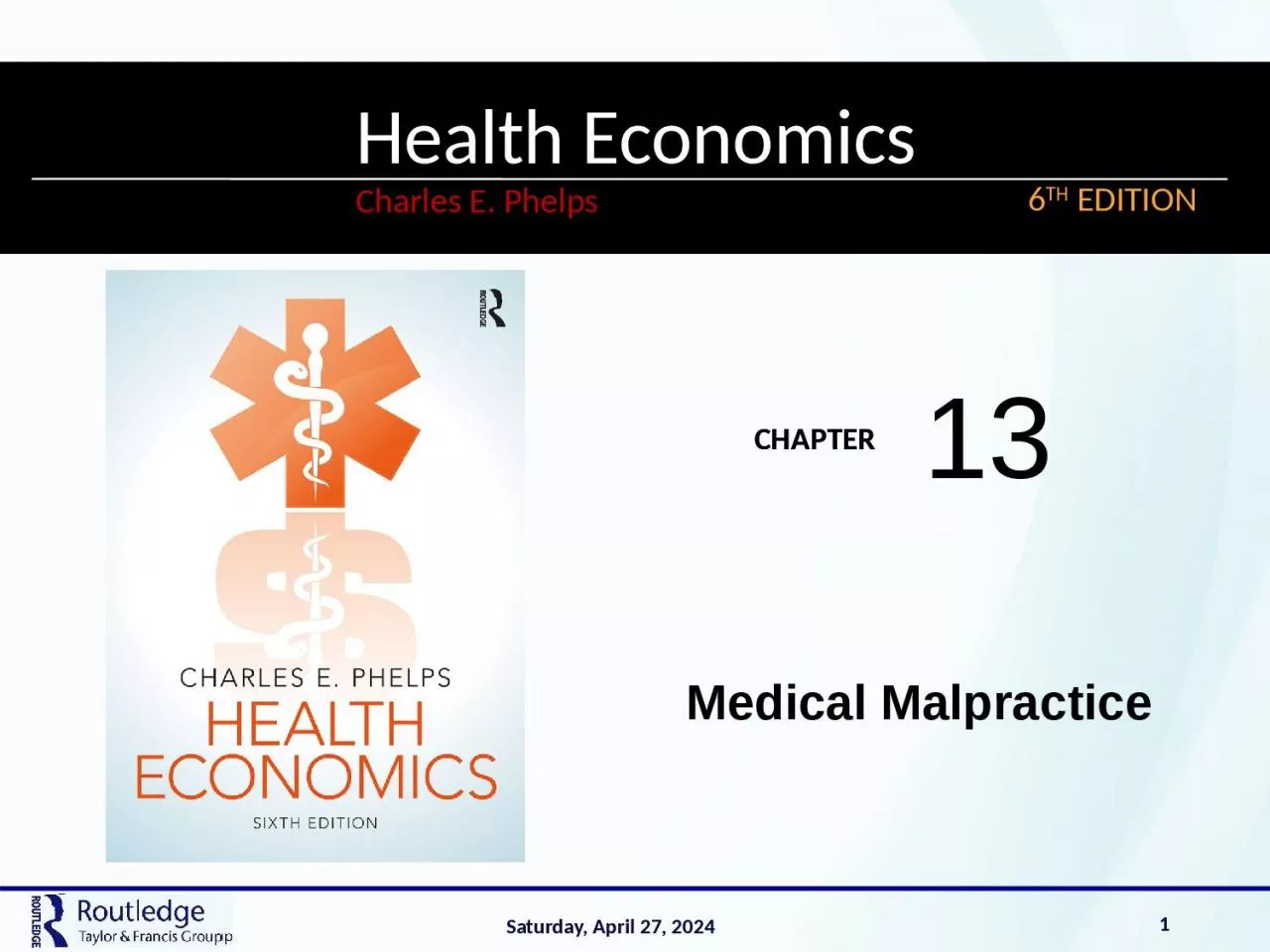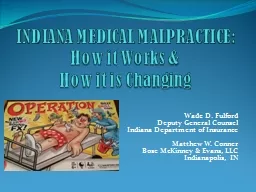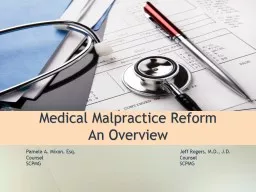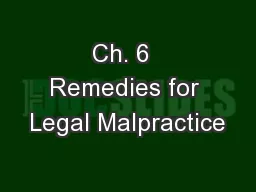PPT-Medical Malpractice 13 25 September 2017
Author : carla | Published Date : 2022-06-11
1 Learning Goals Learn the basic concepts of liability and tort law in the US legal system Know the basic goals of a liability system deterrence and compensation
Presentation Embed Code
Download Presentation
Download Presentation The PPT/PDF document "Medical Malpractice 13 25 September 2017" is the property of its rightful owner. Permission is granted to download and print the materials on this website for personal, non-commercial use only, and to display it on your personal computer provided you do not modify the materials and that you retain all copyright notices contained in the materials. By downloading content from our website, you accept the terms of this agreement.
Medical Malpractice 13 25 September 2017: Transcript
Download Rules Of Document
"Medical Malpractice 13 25 September 2017"The content belongs to its owner. You may download and print it for personal use, without modification, and keep all copyright notices. By downloading, you agree to these terms.
Related Documents














